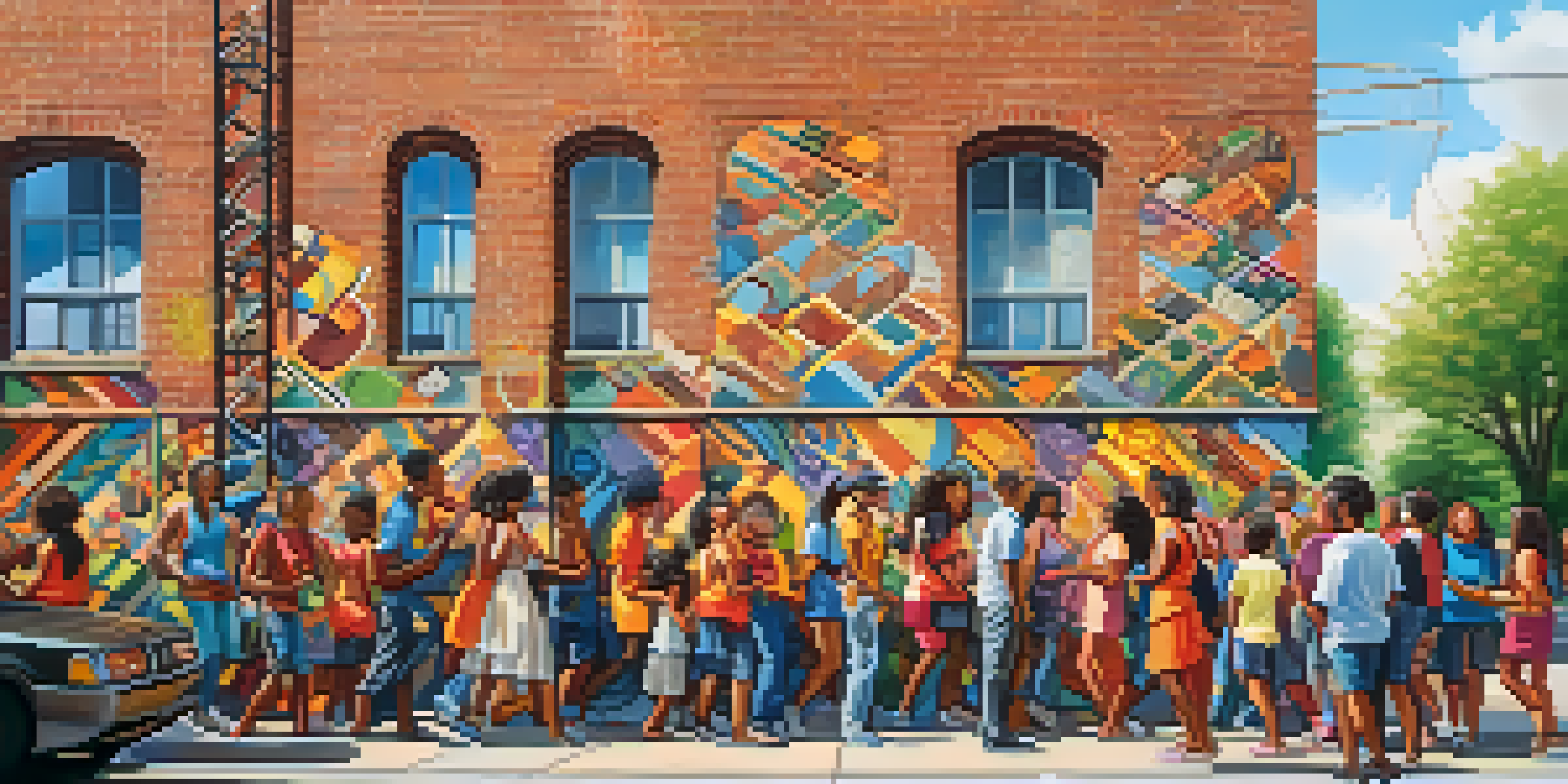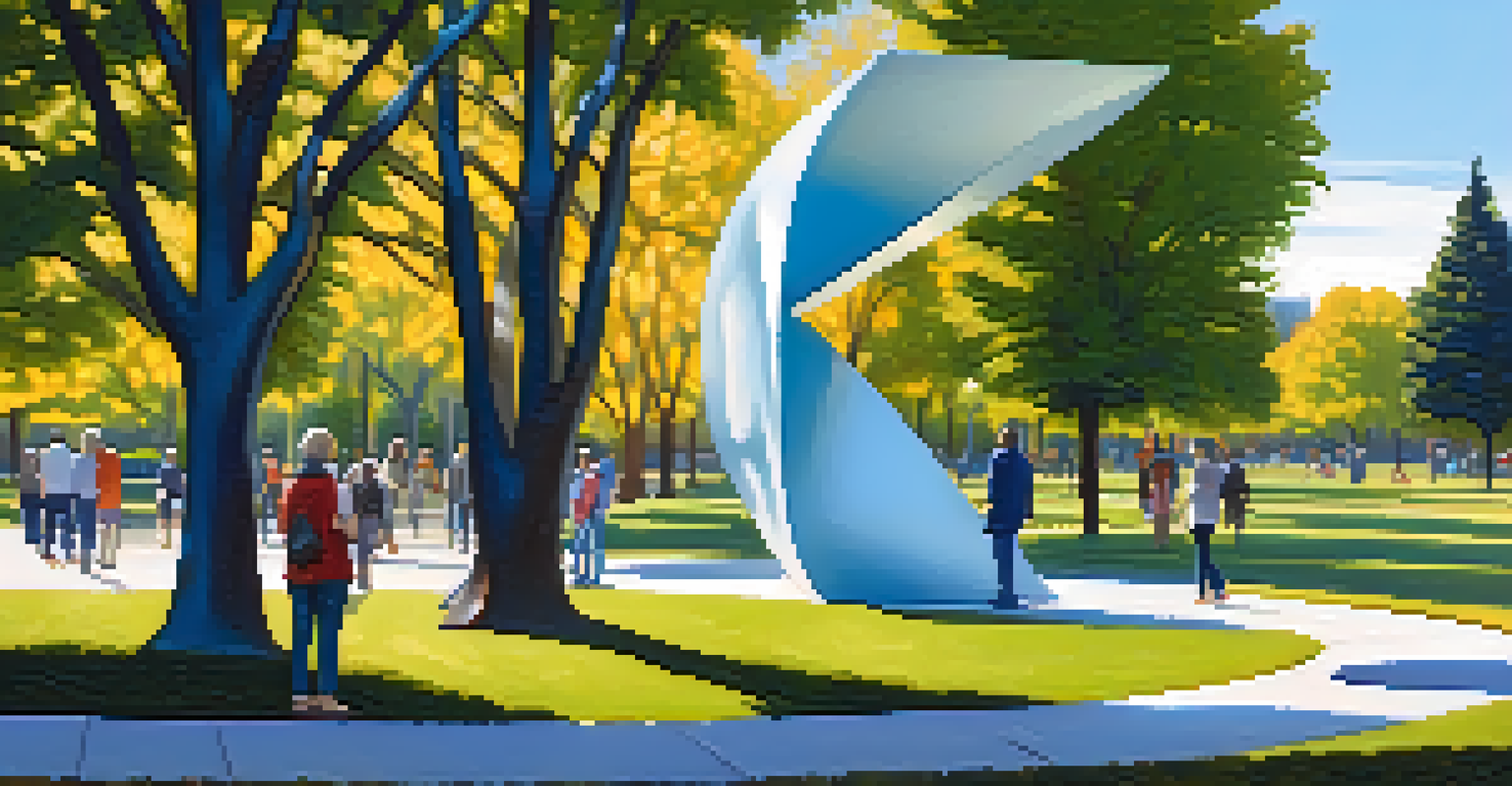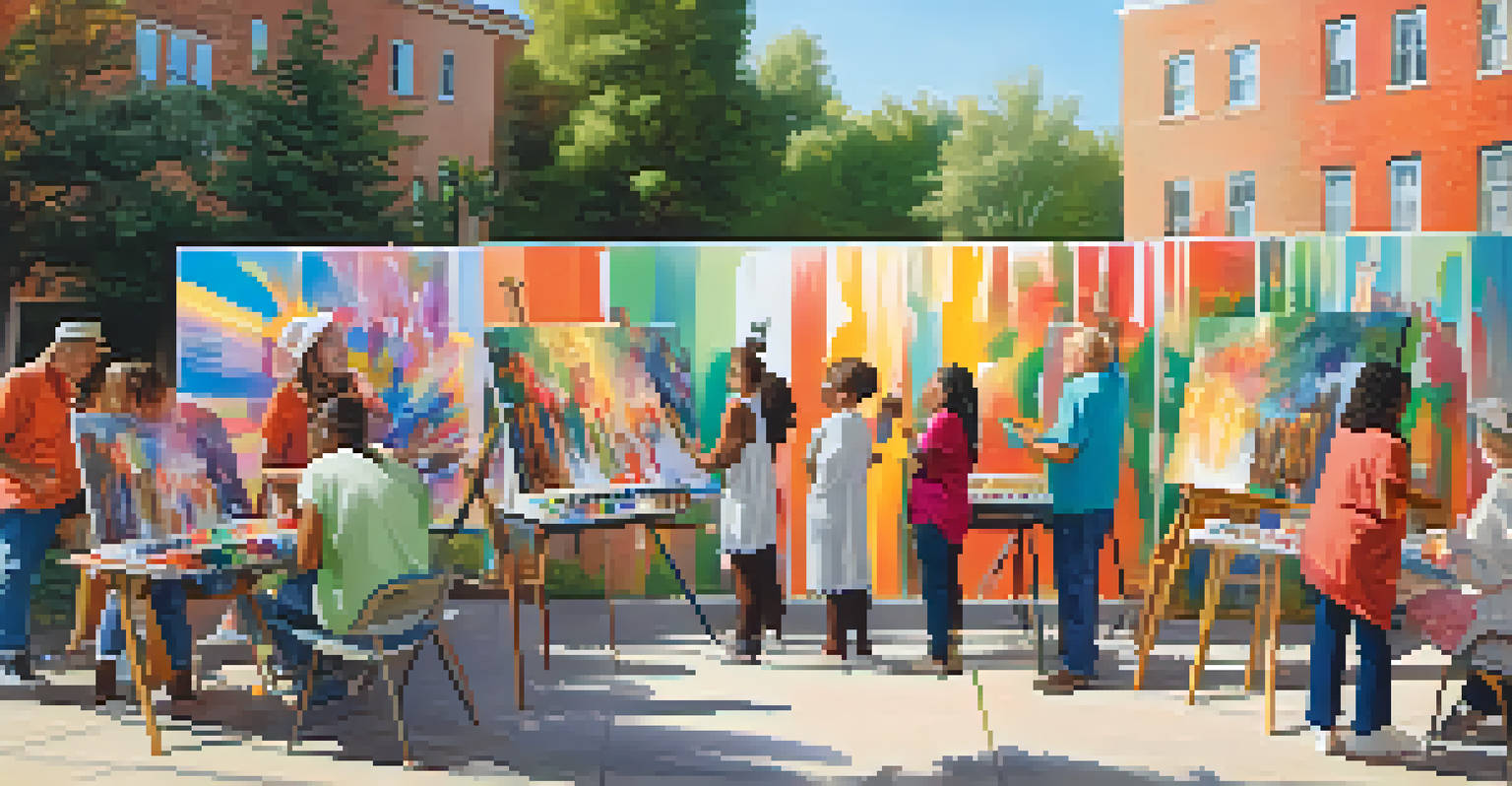The Function of Public Art: Community Engagement and Expression

Understanding Public Art and Its Importance
Public art encompasses a variety of artistic expressions found in communal spaces, such as murals, sculptures, and installations. It plays a crucial role in enhancing the aesthetic of urban environments while also serving as a platform for social commentary. By integrating art into public spaces, cities can reflect their unique cultures and histories, making art accessible to everyone, not just gallery-goers.
Public art is not only a reflection of the community’s identity but also a celebration of its diversity and creativity.
Moreover, public art invites diverse interpretations, allowing people from different backgrounds to connect with the work in their own ways. It encourages dialogue among community members, sparking conversations about the themes and messages conveyed through the artwork. This shared experience can foster a sense of ownership and pride in the community, transforming how residents view their environment.
In essence, public art is more than just decoration; it is a medium through which communities can express their identity and values. As cities continue to grow and evolve, public art remains a vital element that helps shape the narrative of urban life, making it a cornerstone of community engagement.
The Role of Public Art in Community Engagement
Community engagement through public art often starts with the creative process itself. Artists frequently collaborate with local residents, gathering input to ensure the artwork resonates with the community’s values and aspirations. This participatory approach not only empowers individuals but also builds relationships among community members, creating a shared vision for public spaces.

Furthermore, events such as art walks, workshops, and unveilings allow community members to interact with artists and each other. These gatherings can foster a sense of belonging and encourage people to take an active role in their neighborhoods. When residents engage with public art, they are more likely to take pride in their surroundings and advocate for ongoing artistic initiatives.
Public Art Enhances Community Identity
Public art reflects and celebrates local cultures, fostering a sense of belonging among residents.
Ultimately, public art serves as a catalyst for community connection. When people come together around art, they create a stronger, more vibrant community that values creativity, collaboration, and collective identity.
Public Art as a Medium for Self-Expression
Public art provides a canvas for individuals and groups to express their thoughts, beliefs, and experiences. This expression is vital in a diverse society, where different cultures and perspectives converge. Artists often use their work to address social issues or highlight local narratives, giving a voice to those who may feel unheard in traditional forums.
Art is the most beautiful of all lies; it gives us a glimpse of reality from different perspectives.
For instance, murals can depict stories of community history, struggles, and achievements, allowing residents to see their shared experiences reflected in the art. This representation can inspire pride and foster resilience within communities, as people recognize their struggles and triumphs in the artwork around them. Such visibility can also promote empathy by encouraging viewers to see the world from different perspectives.
In this way, public art becomes a powerful tool for self-expression, enabling both artists and community members to communicate their identities and stories. The emotional resonance of public art can create a deeper understanding of shared human experiences, bridging gaps between diverse groups.
Public Art and Cultural Identity
One of the most significant functions of public art is its ability to reflect and celebrate cultural identity. Each piece of public art carries the essence of the community it inhabits, showcasing local traditions, histories, and values. This cultural representation is essential for fostering a sense of belonging among residents, as they see their identities represented in the public domain.
Moreover, public art can help preserve cultural heritage, especially in areas undergoing rapid change. For instance, a mural depicting historical events or figures can remind residents of their roots, even as new developments reshape their neighborhoods. This preservation fosters continuity in cultural narratives, allowing new generations to connect with their heritage.
Public Art Boosts Economic Growth
Investing in public art attracts tourism and increases property values, benefiting local economies.
By celebrating cultural identity through public art, communities can cultivate a rich tapestry of shared experiences. This celebration not only strengthens community bonds but also encourages inclusivity, as diverse cultures find representation and recognition in public spaces.
The Economic Impact of Public Art
While the aesthetic and social benefits of public art are well-documented, its economic impact cannot be overlooked. Public art projects often attract tourism and investment, as visitors are drawn to vibrant, artistic neighborhoods. A well-placed mural or sculpture can become a landmark, encouraging people to explore the area, dine, and shop locally, ultimately benefiting the economy.
Moreover, public art can enhance property values by creating visually appealing environments that people want to live in. Neighborhoods that prioritize art and culture often experience revitalization, as new businesses and residents are attracted to the area's unique character. This investment in public art can lead to job creation and increased economic activity within the community.
In this way, public art serves not only as a tool for expression and engagement but also as a catalyst for economic development. By investing in public art, communities can reap long-term financial benefits while fostering a vibrant cultural scene.
Challenges in Public Art Implementation
Despite its many benefits, public art initiatives often face challenges. One significant hurdle is securing funding, as local governments and organizations may have limited budgets for artistic projects. Artists and community leaders must often seek grants, sponsorships, or crowdfunding to bring their creative visions to life, which can be a lengthy and complex process.
Additionally, navigating community interests and opinions can be tricky. What resonates with one group may not with another, leading to potential conflicts or misunderstandings. Engaging in open dialogue and collaboration is essential to ensure that the final piece reflects the community's diverse viewpoints, but this can require time and patience.
Challenges in Public Art Projects
Funding and community engagement pose significant challenges in implementing successful public art initiatives.
Ultimately, while challenges exist, they can often be overcome through creativity and collaboration. By fostering inclusivity and open communication, communities can create public art that truly resonates with their residents and stands the test of time.
The Future of Public Art and Community Engagement
As cities continue to evolve, so too does the role of public art in community engagement. With advancements in technology and digital art, new forms of public art are emerging, offering opportunities for interaction and participation. For example, augmented reality installations can enhance traditional artworks, inviting viewers to engage with them in innovative ways.
Furthermore, as communities become increasingly diverse, public art will play a crucial role in representing various cultural narratives. Artists will continue to create works that reflect the changing demographics and values of their neighborhoods, ensuring that public art remains relevant and meaningful. This adaptability will be key in fostering ongoing community engagement.

Looking ahead, the future of public art is bright. As communities embrace creativity as a fundamental aspect of their identity, public art will undoubtedly continue to thrive as a vital tool for expression, connection, and cultural celebration.